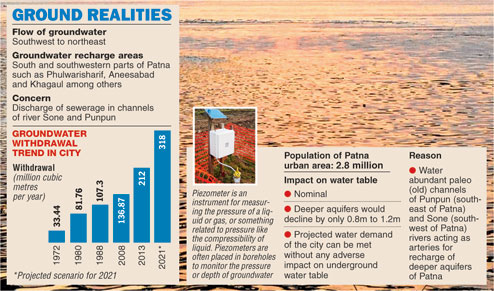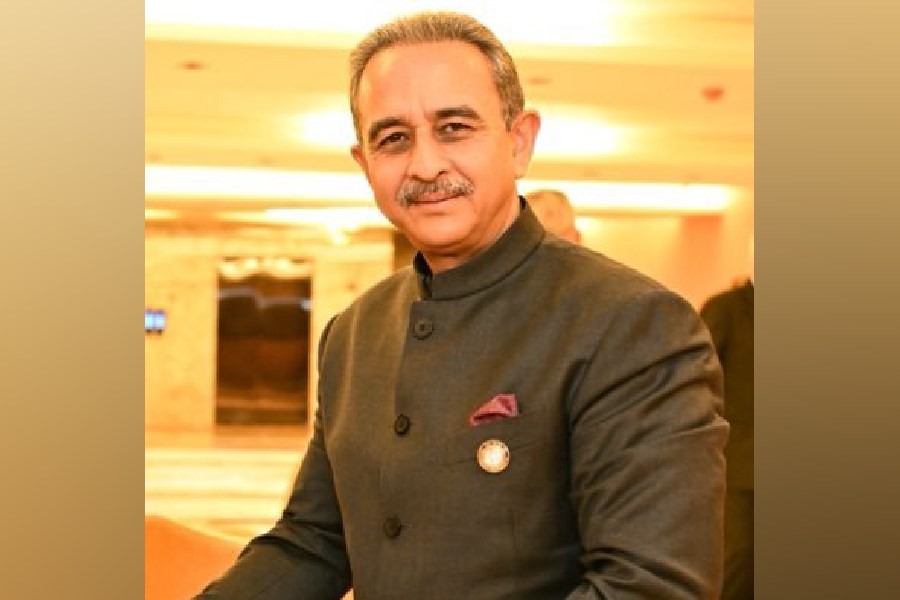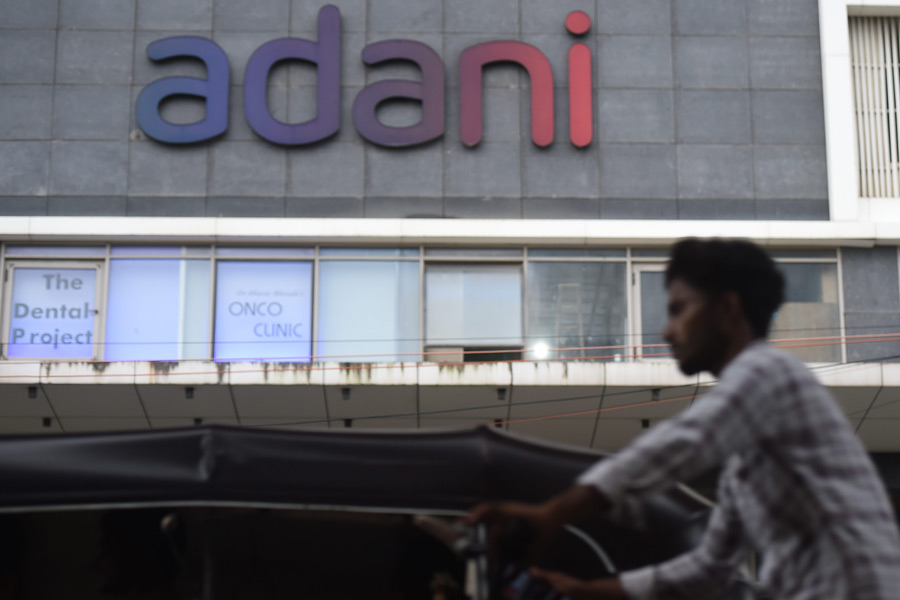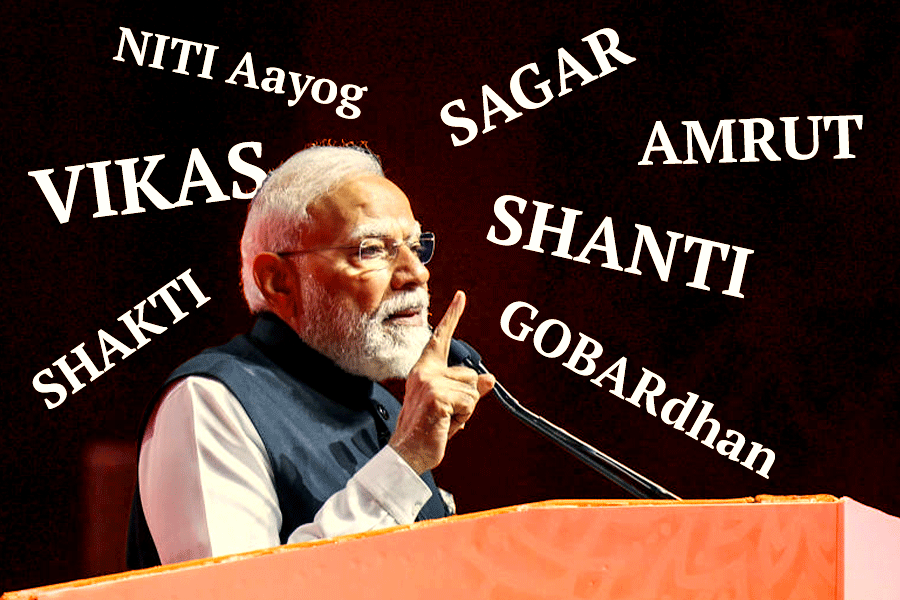 |
This World Water Day, a Central Ground Water Board report has brought smiles on the faces of researchers tracking the groundwater trend in the city for long.
The report, based on the monitoring of city’s groundwater table between 2008 and 2011, has stated that even if groundwater is extracted with an annual increment of 5 per cent between 2011 and 2021, there would be a meagre decline of 0.8m to 1.2m in the deeper aquifers of the city.
The study was done by constructing 10 wells having the depth of 200-220m at different locations in Patna to monitor the behaviour of deeper aquifers from 2008 to 2011.
“The purpose of the study was to evaluate the effects of the present and projected groundwater withdrawals on the prevailing water levels in the aquifer underneath the urban sprawl of Patna,” said S.N. Dwivedi, a scientist with the ground water board.
He added: “The data collected through regular monitoring of the piezometers (water table monitoring wells) was used to make mathematical models. These models were used to compute the hypothetical extraction of water over the next eight years. Under the projected scenario, the piezometric levels of deeper aquifers have shown a decline of only 0.8m to 1.2m, indicating that the deeper aquifers can cater to the projected water demand without any adverse impact on the groundwater levels.”
The report has stated that the reason behind such rich groundwater resource of the city is the recharge of the deeper aquifers through the water-abundant channels of Sone and Punpun rivers. “The paleo (old) channels of river Sone are the major source of recharge. River Punpun, which is believed to flow in an abandoned course of river Sone, is also a major source of recharge of groundwater of the city. The flow of groundwater at present is from southwest to northeast with direct hydraulic connection with the channels of Sone and Punpun. It maintains the health of deeper aquifers in the urban areas of the state capital,” said Dwivedi.
The report has stated that 52 per cent of the population of Patna, at present, is dependent on municipal water supply and the rest are dependent on private sources such tubewells and borewells.










